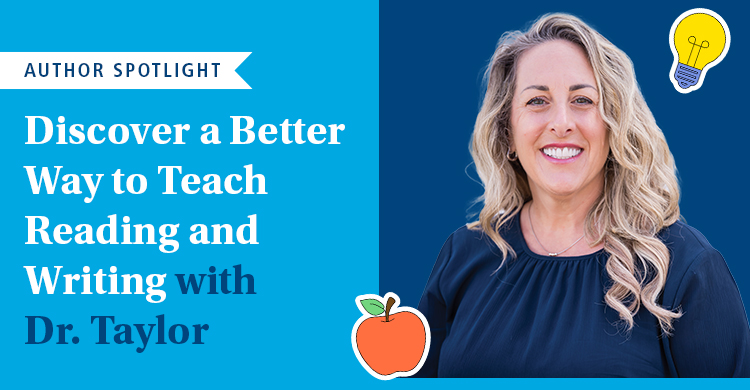“It’s just one of those things,” she said. I was curious, so I asked Jackie to elaborate. “You know – the parts of the job no one ever told you about or helped you prepare for.” Many teachers would find alignment to this quote, but Jackie isn’t currently a teacher–she is a school principal.
She was referring to this: knowing how to create a meaningful agenda, with efficient and effective processes resulting in clear goals. It’s just not part of many university principal preparation programs, and if you were not fortunate enough to work with and for a leader who had these skills, you probably haven’t experienced artfully-designed and well-facilitated meetings either.
My co-facilitator Shawna and I are both in the business of meetings: Shawna as the Chief Executive Director of Organizational Learning at the Lewisville Independent School District (ISD) in Lewisville, Texas, and Thomas as a leadership and professional developer. Our successes hinge on being able to create and implement effective agendas.
This first blog post, a series of three, lifts back the curtain as we led a group over a series of months. Through these posts, we show our planning template, as well as the incredible power of the resources found at The School Reform Initiative.
Our Language Choices
Before you peek into our planning processes, an explanation about two words seems important.
Infinitives: Some of you may be wincing right now – imagining a giant sentence diagram with multiple prepositional phrases and even, you guessed it, a gerund. When we talk about infinitives, we are referring to the two-word phrases which start with the little word “to.” “To run,” “to jump,” “to fly,” are examples. Using infinitives in constructing agendas has been a game-changer.
Discussion Protocol: Considering COVID and all the safety precautions taken in schools, the word “protocols” can be equated to having enough spray cleaner, wipes, or disposable gloves. In our worlds of creating agendas, discussion protocols are structured conversations: timed experiences where educators speak, listen, and think in specific ways, organized and shepherded by a facilitator. Discussion protocols were first popularized out of grant-funded work at the Annenberg Institute for School Reform at Brown University. 25 years later, much of that groundbreaking work is housed at The School Reform Initiative, who choose to offer these tools free of charge, hoping educators will see the power of discussion protocols relies heavily on (1) the willingness of group members to rely on the constraints discussion protocols ask us to apply, and (2) a facilitator who not only knows the protocol well, but knows why each step exists and what to do to help each step maximize its potential.
So, with that as a backdrop, here is our extended example of creating agendas with one group over time.
Newly Hired Principal Support Meetings
As the baby boomer principal population began retiring, Lewisville ISD saw the need for a structured program of principal support. In this first year of the program, newly hired principals receive coaching support as well as engage in intentional learning quarterly with each other. Several retired district principals were asked to mentor the newly hired principals by visiting the campus and providing on-the-ground coaching as well as phone support. The agendas presented in this section represent the required quarterly meetings with other newly hired principals.
Principals have completed the following prior to coming together:
- Designed their 100-day entry plan with principal supervisors
- Read chapters 1-4 of The Principal 50 (Kafele, 2015)
- Met together during summer leadership conference
The agenda shows how protocols are used for purpose, not simply done. In fact, over 90% of the 15 principals in this cohort had previously completed three days of professional development about how to use discussion protocols as an effective leader. Thus, the intent of these sessions was not to teach protocols; rather, it was to use protocols for the work they needed to accomplish as school leaders.
Day One: September 20
One guiding principle in our planning was to assure the agendas were responsive to principal needs for two reasons: this was the first year of this support iteration, and responsive agenda-setting is a best practice for adult learning, and we wanted to help these leaders see this support mechanism as a microcosm of the adult learning they could design for their own school staffs.
We knew effective learning communities include rituals and procedures. How to begin our day-long experiences together would be important, as seen in Table 1. We knew of a specific protocol we planned to use on the second day we were together but did not want to introduce that experience too early. We decided to help ground these principals with a process quite context-agnostic: they could lift the experience and use it in a variety of settings with a variety of groups if they wished. Using a variety of items (e.g., stress balls, fidget toys) at each table, the first round of Synectics created a personal connection. The second round met our real goal: using a grounding experience to advance our day’s agenda which included campus improvement planning and change management.
Table 1 September 20 Agenda Excerpt #1
| Why | When | What/How | What Happened |
| To ground | 8:30 | Synectics
Make a connection with one of the items on the table Partner talk Round 1: open connection Round 2: connection to something you’re trying to change on your campus |
Participants enjoyed the items, made meaningful connections, and articulated several possible applications for the experience. |
As new principals continue to find their “sea legs,” prioritizing demands to focus on instruction is a challenge and stopping to assess seems to be a luxury. Days are filled with dousing operational fires and many new principals are quite adept at that work, which can lead them to a false sense of accomplishment. We knew an important function of this learning community was to personally and collectively assess our instructional leadership.
The specific items listed in Table 2 were chosen as they fit into the district vision of campus needs assessments. In order to set a vision for the campus, examining stakeholder relationships and needs is critical.
Finally, an intentional choice was made regarding the process of this experience: rank ordering. Assessing in schools often involves sorting into categories which have positive and negative connotations: effective/not effective; glow/grow, using a rubric with multiple levels. Asking learners to rank order a list does not assume deficit (or success) on any specific item; rather, it asks them to assess each item in light of each other item. This kind of higher order thinking is helpful for these principals for this immediate content, and it also shows a clear model of creating thinking environments for teachers in their buildings.
Table 2 September 20 Agenda Excerpt #2
| Why | When | What/How | What Happened |
| To assess | 8:45 |
Have the following 10 items on strips of paper and ask participants to rank order how well you are engaging in the following leadership behaviors:
Show your list to a partner and discuss: What are the factors which led you to order this way? (e.g., time, energy, contextual complexity) |
In written reflections at the end of the day, these few minutes had been poignant for a few principals. One mentioned she knew she had been spending extra time on a specific behavior, but it hadn’t occurred to her what was not happening as often as a result. |
Check out our next blog post where we enter into the next several hours of the agenda, where several discussion protocols are used to the group’s benefit.






